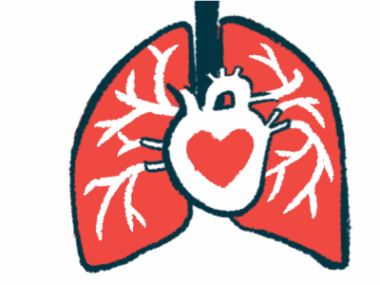Combo of screening tools may help rule out silent cardiac sarcoidosis
Study notes the condition's prevalence, examines several heart assessments
Written by |

Nearly a quarter of sarcoidosis patients were found to have clinically silent cardiac involvement, in which standard heart symptoms are not observed, recent research indicated.
Readily available cardiac screening tools, when used in combination, may help to rule out the presence of this hidden disease manifestation and avoid the need for costly and unnecessary MRIs, according to study findings.
The study, “Screening tools for the detection of clinically silent cardiac sarcoidosis,” was published in Respiratory Medicine.
In sarcoidosis, clumps of inflammatory cells called granulomas accumulate in the body’s organs. When they accumulate in the heart, it is called cardiac sarcoidosis (CS).
About 5% of sarcoidosis patients have symptomatic, or clinically manifest, cardiac sarcoidosis, characterized by heart rhythm changes or heart failure, while around 20%-25% of sarcoidosis patients are thought to have clinically silent cardiac involvement, in which such symptoms are not evident.
Even without overt symptoms, cardiac sarcoidosis can still be associated with an increased risk of adverse outcomes. Indeed, it has been identified as the main cause of death among Japanese sarcoidosis patients, the researchers wrote.
As such, detecting the condition is critical. Cardiac MRIs are the gold standard for detection, but this approach is costly and may not be easily accessible. “A simpler, affordable screening algorithm is warranted,” the researchers wrote.
Other routine tests used to assess heart structure and function include electrocardiogram (ECG), Holter echocardiogram, signal-averaged echocardiogram (SAECG), and transthoracic echocardiogram (TTE), as well as a clinical history of cardiac symptoms.
The study’s findings
In their study, the scientists examined the possible utility of these commonly available screening tools for diagnosing silent cardiac sarcoidosis among 129 patients with established extra-cardiac sarcoidosis, or sarcoidosis affecting organs outside the heart, but with no evidence of clinically manifest cardiac sarcoidosis.
Patients were recruited through the multicenter CHASM-CS patient registry (NCT01477359), which is sponsored by the University of Ottawa Heart Institute in Canada.
Using gold-standard MRI imaging, 29 patients (22.5%) were found to have clinically silent cardiac sarcoidosis, with 19 of those classified as having significant cardiac involvement (14.7%).
Most cardiac sarcoidosis patients — 25 of 29 — were male, yielding a significant sex disparity. An existing diagnosis of hypertension (high blood pressure) was also significantly more prevalent in people with silent cardiac sarcoidosis.
Symptom histories indicated that 15 out of all 129 patients had cardiac symptoms. By cardiac test, abnormalities were observed in 36 people (27.9%) with ECG, 10 people (7.8%) with TTE, 26 people with Holter (20.2%), and 51 people (53.1%) via SAECG.
Altogether, each individual test was found to have relatively poor diagnostic accuracy for cardiac sarcoidosis. Still, combining certain screening tools increased their accuracy.
For example, the most efficient screening method consisted of a combination of a normal Holter and SAECG tests, which could accurately identify 45% of patients without cardiac involvement on an MRI scan.
The screening tools generally had higher accuracy for detecting cardiac sarcoidosis with significant cardiac involvement, according to the scientists.
Altogether, the findings indicate that these common screening tools, when used in combination, “can be particularly useful to avoid the need for additional advanced cardiac imaging,” the researchers wrote.
Still, the results don’t mean cardiac MRIs should be eliminated altogether, the scientists emphasized.
“A feasible CS [cardiac sarcoidosis] screening should not aim at finding alternative tools so to avoid CMR [cardiac MRI] altogether, but rather at excluding true negative cases that don’t need additional expensive imaging,” they wrote.
Future studies should aim to confirm the findings in larger and more diverse patient populations, the scientists noted. The team also indicated that a cost-benefit analysis is warranted for routine cardiac sarcoidosis screening.





